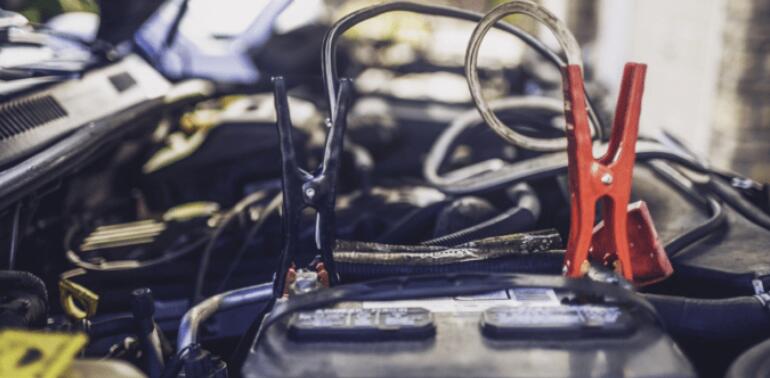
It’s a sinking feeling that many drivers have experienced at one time or another — turning the key in the ignition and the car won’t start. Whether you left the lights on or it’s simply that the battery is old, even the most reliable car won’t start if the battery has been drained. With a little planning, though, you can be prepared if you ever need to give your battery a charge.
From having jumper cables in your car to calling for assistance, follow these tips for jump starting a car.
Using Jumper Cables
Before you hit the road, make sure you have jumper cables in your emergency car kit. That way, you’ll have the cables on hand if you ever need them. Once someone has arrived with a working car that you can use to charge your dead battery, and you have the cables in-hand, Edmunds suggests the following steps:
* Park the two cars close together but make sure they don’t touch. Then, turn both cars off.
* Put on eye protection in case of sparks, says Meineke.
* Connect the positive jumper cable (usually red) to the positive terminal on the “dead” battery. (Typically, the positive battery terminal is marked with a plus sign, while the negative is marked with a minus.) Now that the cable is attached to the battery, Meineke states that you should not touch the metal clamps to any metal other than as described below. Doing so could cause an electric shock.
* Connect the other end of the positive cable to the positive battery terminal on the vehicle providing the jump.
* Connect the negative cable (usually black) to the negative terminal on the vehicle providing the jump.
* Connect the other end of the negative cable to an exposed metal part of the vehicle with the dead battery. (Unpainted components like brackets, bolts, etc., often provide the best grounding, which may help prevent sparking.)
* Check that the cables are not near any moving engine parts.
* Start the “booster” vehicle, and let the engine idle for a few minutes. If the battery is a few years old or has been dead for a few weeks, you may consider revving the engine slightly on the booster car to speed up the charging process, says Edmunds.
* Start the disabled vehicle.
* If the car with the dead battery starts, let it run for at least 20 minutes, Consumer Reports suggests. If it doesn’t start, you may need to check the cable connections, according to Consumer Reports. If that doesn’t work, you may need a mechanic’s help.
* Keeping the jumper cable away from any metal, begin removing them in reverse order (to help prevent sparking). First, remove the black (negative) cable from the ground on the previously disabled vehicle (keep the vehicle running).
* Remove the other end of the negative cable from the battery of the vehicle providing the jump.
* Remove the positive cable from the battery of the vehicle providing the jump.
* Remove the positive cable from the previously disabled vehicle.
If you are not comfortable performing any of these steps, call a OBD2 key programmer for assistance.
Edmunds recommends driving the jump-started car for at least 20 minutes to allow enough time for the battery to charge. Keep in mind that if the battery or alternator are not in good shape, you may need another jump start. Be sure to stop the vehicle somewhere safe, where you have assistance nearby should the vehicle not start again.
Call Roadside Assistance
Many auto insurers now offer roadside assistance plans for their customers, which often provide help with common situations, such as breakdowns, flat tires and dead batteries. It can be a relief to know professional help is just a call away (or click, as some providers offer apps as well) if your car won’t start. If you don’t have this service, you may want to consider adding it to your auto insurance coverage or purchasing a roadside assistance service plan.
After your car is running again, remember that a jump is meant to restart the disabled vehicle, not to recharge the battery. It may be a good idea to put the jumped battery on a battery charger, which you can buy at an automotive store, as soon as possible to help ensure that it’s charged to full capacity. If you’re unsure about the long-term health of your battery, consult a mechanic or a Car Diagnostic Tool at an automotive store for advice.
Leave a Reply